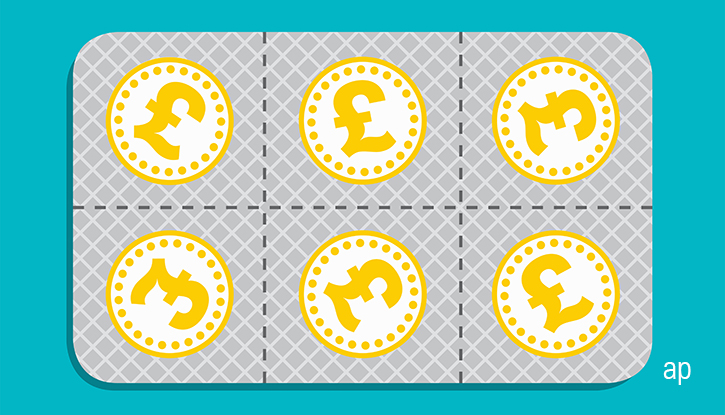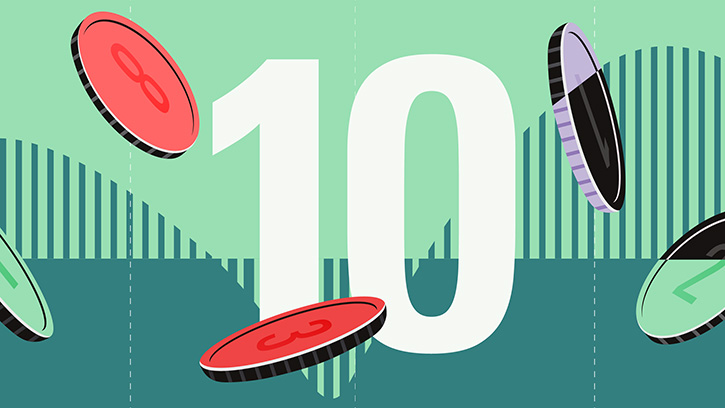.jpg)
Funds and ETFs that distributes a dividend are a popular choice for investors seeking assets that yield a regular, predictable income. They come in the shape of equity, fixed income, balanced and other fund categories, helping investors avoid equity risk in their pursuit of a dividend flow.
In principle, it is safer to obtain a dividend income from a basket of securities than from a single company. If we choose to construct a dividend portfolio ourselves, the result is often a narrower selection of stocks, exposing investors to the risk of individual companies lowering or suspending their payouts. That runs counter to the objective of a constant, and if possible, increasing dividend income.
It is also easier to achieve a periodic income with a certain desired frequency of flows using a fund than using one's own basket of stocks. Indeed, fund managers who have launched distribution classes have often done so through multiple classes with annual, quarterly or monthly payouts.
But there is one big problem with funds that distribute dividends. What a dividend investor wants is a dividend that grows over time, and that's not usually the case with funds. They tend to adjust the dividend according to the evolution of net asset value-- the development of the market.
In the stock market there are companies deemed “dividend aristocrats” because they consistently increase their payouts. To receive this badge of honour, a company must have consistently increased its distributions for at least 25 consecutive years. Such companies have a track record of stable earnings, strong financial health, and a commitment to returning value to their shareholders through regular dividend payments.
They are typically large, well-established companies with a history of stable earnings and a solid market position. Some well-known examples of dividend aristocrats include Coca-Cola [KO], Johnson & Johnson [JNJ] and Exxon Mobil [XOM].
Exxon Mobil has increased its dividend per share in each of the last 10 years, even during 2020 when the stock lost 36% in USD. This year, the company increased its dividend per share from 3,43 to 3,48.
By comparison, let's take a look at what has happened in the last 10 years to M&G Global Dividend A EUR, one of the funds with the highest AUM and the highest dividend yield in the Morningstar Global Equity Income Category.
The chart clearly shows that the total dividend distributed has been irregular in these last 10 years: there have been 3 years (2017, 2019 and 2022) where the fund has had to reduce its dividend.
And that pattern has been typical for dividend distributing funds.
In the Morningstar category mentioned-- Global Equity Income-- of 134 fund classes that have distributed a dividend in each of these last 10 years, only 14 classes have not suffered any dividend cut during that period.
Few exceptions
We'll highlight two funds that have managed to increase their dividend year after year.
FvS Dividend R (Medalist Rating: Gold)
The strategy's effective investment philosophy supports a High Process Pillar rating. Independent of the rating, analysis of the strategy's portfolio shows it has maintained a significant overweight position in quality exposure and an underweight in yield exposure compared with category peers. A high quality exposure means holding stocks that are consistently profitable, growing, and have solid balance sheets. And a low yield exposure is rooted in holding fewer stocks with high dividend or buyback yields -- instead, typically holding stocks in an early stage of development.
Fidelity Global Dividend (Medalist Rating: Bonze)
Dan Roberts, the fund managwer, applies a quality-oriented approach, but with a valuation conscious mindset. He first screens the universe through a quantitative filter, followed by in-depth bottom-up stock analysis. Roberts looks for companies with predictable and resilient cash flows, reliable business models, transparent financial statements, sound balance sheets, and strong management. It leads to a 50-60 stock portfolio where cyclical industries like banks, energy, and commodities are typically avoided. Instead, Roberts finds good opportunities in healthcare, insurance, exchanges, consumer staples, and industrials.



























